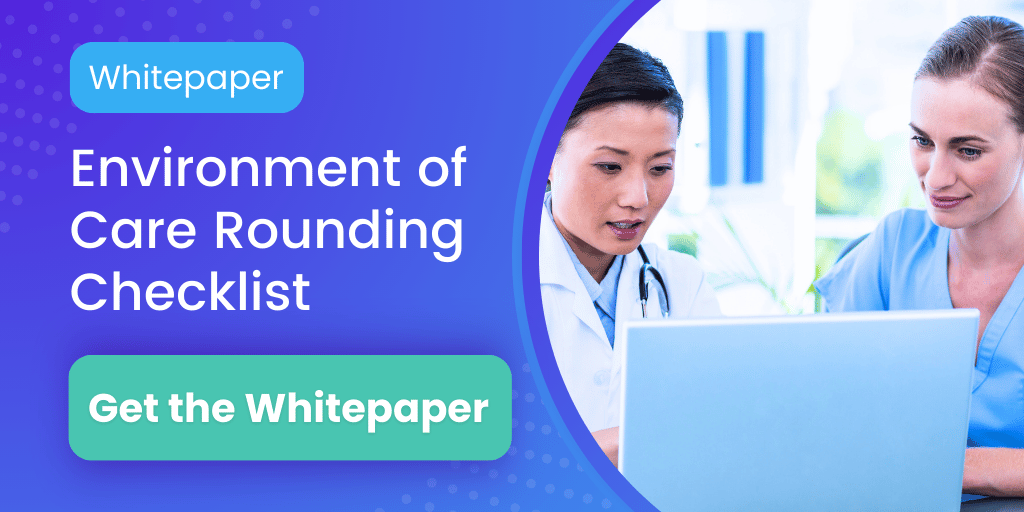4 min read
Improve Patient Safety with Checklists in Hospitals
Performance Health Partners
March 3, 2023

Patient safety incidents are a serious concern in healthcare. These incidents can cause harm to patients, increase costs, and damage brand reputation. According to a report by the World Health Organization, one in ten patients experiences harm while receiving healthcare, and 50% of these incidents are preventable. Therefore, it's critical for healthcare organizations to take proactive measures to improve patient safety. Read on to learn how to improve patient safety with checklists in hospitals and other healthcare organizations.
Checklists have been used in many industries to improve safety and reduce errors.
- Aviation: Since the 1980s, checklists have been a critical tool for pilots and air traffic controllers to ensure safety in the aviation industry. They are used to standardize procedures for takeoff, landing, and other critical phases of flight.
- Manufacturing: Checklists are used in the manufacturing industry to ensure that machines and equipment are properly maintained and operated, to prevent accidents and ensure the safety of workers.
- Construction: Checklists can help ensure that safety protocols are followed on job sites, to prevent accidents and injuries to workers.
- Food service: In the food service industry, checklists ensure that food safety protocols are followed, to prevent contamination and illness from foodborne pathogens.
- Transportation: Checklists are useful in ensuring that vehicles are properly maintained and operated, to prevent accidents and ensure the safety of passengers and drivers.
- Oil and gas: Checklists standardize safety protocols in drilling and extraction operations to prevent harm and protect workers.
It’s no surprise that in healthcare, one of the highest risk industries due to the potential for patient safety incidents, checklists have also been used effectively to prevent harmful events and improve communication among healthcare teams. They achieve this by ensuring that critical tasks are completed in a standardized manner.
Checklists can be used for a variety of healthcare processes to improve patient safety and standardize procedures. Here are some examples how checklists in healthcare can improve patient safety:
- Medication administration: To ensure that medications are given correctly and that the right dose and route of administration are used.
- Patient identification: To confirm patient identification before procedures and prevent errors such as administering medications to the wrong patient.
- Infection control: To make certain that healthcare providers follow proper infection control procedures, such as hand hygiene and the use of personal protective equipment.
- Prevention of hospital-acquired conditions: A Journal of the American Medical Association (JAMA) study found that the use of a daily checklist for intensive care unit (ICU) patients was associated with a significant reduction in mortality. The study involved 118 ICUs across the United States and found that the use of a daily checklist to remind clinicians to perform specific tasks, such as elevating the head of the bed to prevent ventilator-associated pneumonia, was associated with a 22% reduction in mortality. This study provides further evidence of the effectiveness of checklists in improving patient safety and outcomes in healthcare.
- Equipment maintenance: To guarantee that equipment is properly cleaned and maintained, to reduce the risk of equipment-related incidents.
- Surgical procedures: To ensure that all necessary steps are taken before, during, and after surgical procedures; to prevent errors and reduce the risk of adverse events. According to a study published in the New England Journal of Medicine, the use of checklists in surgical settings was associated with a 47% reduction in the rate of death and complications. The study involved eight hospitals in eight cities around the world and found that the use of a simple checklist before surgery significantly reduced the incidence of surgical complications and improved patient safety. This study demonstrated the effectiveness of checklists in improving patient safety and reducing adverse events in healthcare.
- Patient admission and discharge: To be certain that all required information is collected during patient admission and discharge; to prevent errors and improve communication among healthcare providers.
- Diagnostic tests: To confirm that all necessary steps are taken before, during, and after diagnostic tests; to prevent errors and improve the accuracy of test results.
- Critical care procedures: To ensure that all vital processes are followed during critical care procedures, such as intubation and ventilation; to prevent errors and improve patient safety.
The Benefits of Automated Checklists
More specifically, automated checklists – electronic checklists that can be accessed through a computer, tablet, or smartphone – have countless benefits. Some of the expected outcomes of implementing automated checklists include:
- Standardized procedures: Automated checklists ensure that healthcare providers follow standardized procedures, reducing variability in care and increasing the reliability of care delivery. This leads to enhanced patient safety and improved healthcare outcomes.
- Improved communication: They facilitate communication and collaboration by providing healthcare providers with a clear and consistent framework for tasks and responsibilities.
- Reduced errors: They reduce errors in healthcare by providing prompts and reminders to healthcare providers. This can help to prevent errors such as incorrect medication dosages, missed diagnostic tests, and other preventable errors that can lead to adverse events.
- Increased efficiency: Automated checklists increase efficiency in healthcare by decreasing the time and effort required for routine tasks. This allows healthcare providers to focus on more complex and critical tasks, leading to improved patient outcomes.
- Improved data collection and analysis: They provide valuable data that can be used to improve healthcare processes and patient outcomes. By tracking compliance with checklists, healthcare facilities can identify areas for improvement and implement targeted interventions to address gaps in care.
- Reduced costs: A study by the Agency for Healthcare Research and Quality (AHRQ) found that adverse events in hospitals result in an additional 19.5 days in the hospital and an average cost of $16,000 per incident. Implementing automated checklists can help to reduce healthcare costs by reducing errors and adverse events, improving efficiency, and minimizing the need for costly interventions and readmissions.
Automated Checklists in Incident Management Systems
The functionality of checklists has become increasingly integrated into incident management systems like Performance Health Partners’ software. Incident management systems are used to capture, track, and report patient safety incidents. By integrating automated checklists into these tools, they can further improve patient safety in hospitals by reducing the risk of errors and standardizing procedures.
One of the advantages of using automated checklists is that they can be customized to specific processes and procedures of healthcare organizations. For example, a hospital might use an automated checklist for administering medications to ensure that the correct drug is given to the right patient at the right dose and at the right time. The checklist might include prompts and reminders for healthcare providers, such as checking the patient's allergies, confirming the medication and dosage, and documenting the administration of the medication.
Incident management systems with automated checklists can also provide healthcare organizations with real-time visibility into patient safety incidents. These systems can track incidents from the initial report through investigation and resolution. This allows healthcare organizations to identify trends and process gaps and take proactive measures to prevent related incidents from happening again in the future.
Conclusion
The use of incident management systems with automated checklists is an effective way for healthcare organizations to improve patient safety. These systems can reduce the risk of errors, standardize procedures, improve communication among healthcare providers, and provide real-time visibility into patient safety incidents. Healthcare organizations can also take other measures to improve patient safety, such as implementing training programs and standardizing care.
Ready to learn more?
Book a demo of our incident management system with automated checklists to learn more about how your organization can provide safer care and improve outcomes.



